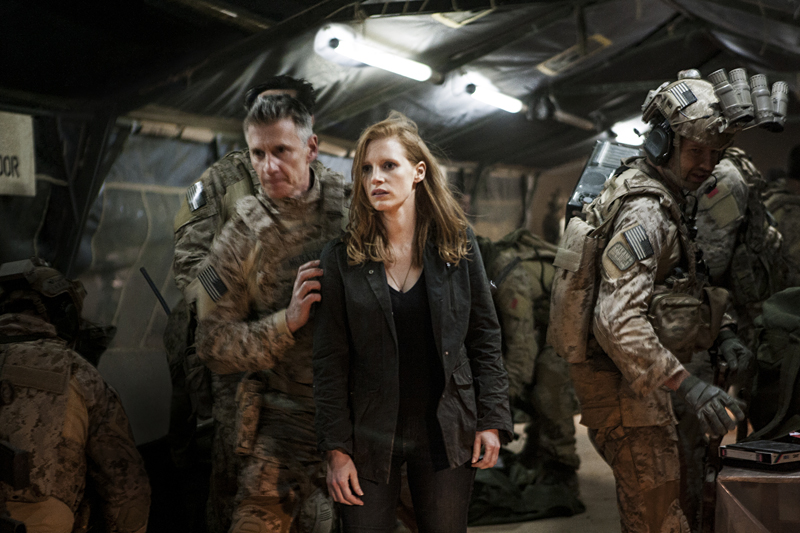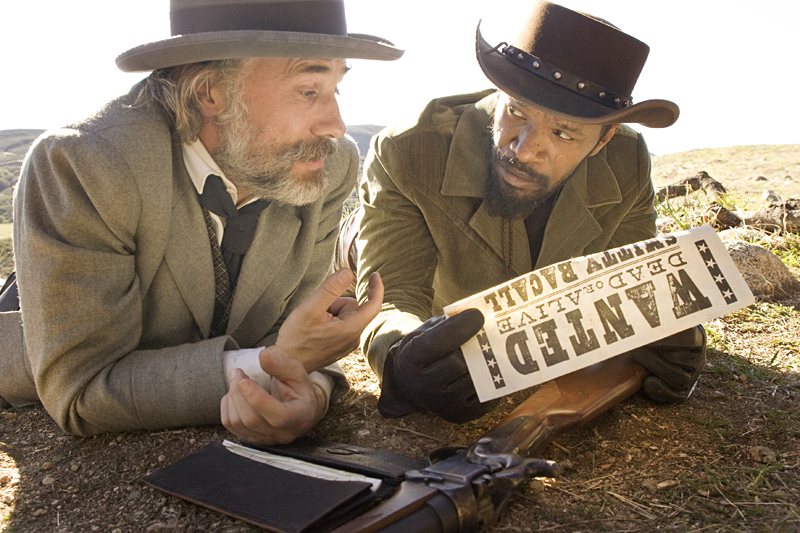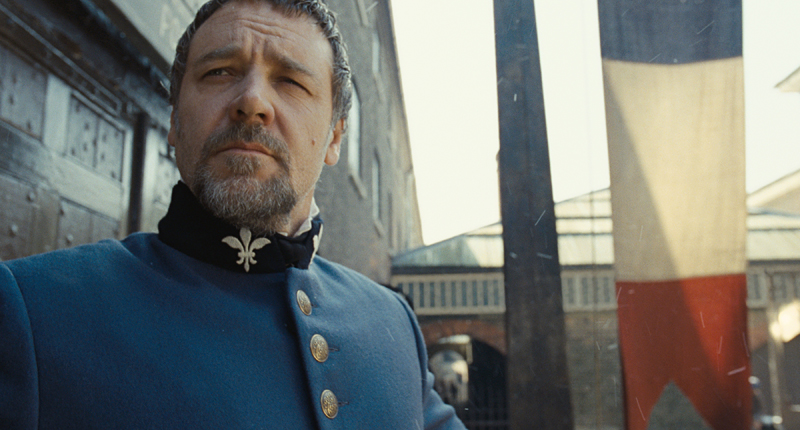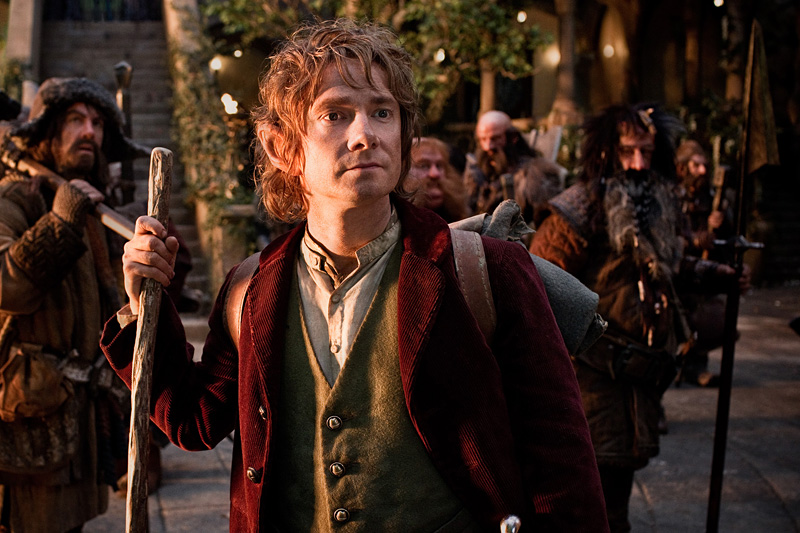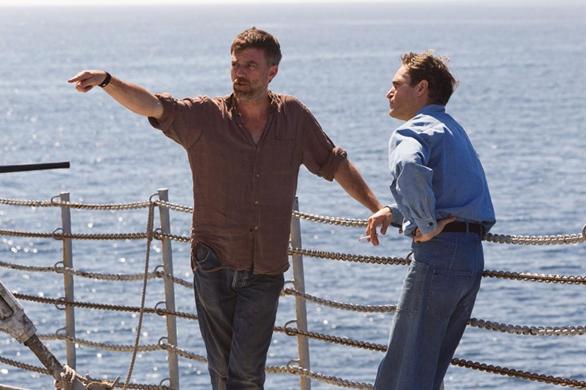Just so you know, it’s going to take a while,” says the CIA officer to his newly arrived colleague at the start of Kathryn Bigelow’s Zero Dark Thirty. The year is 2003, the place a secret prison (or “black site”) somewhere in the deserts of the Middle East or Asia, the task at hand the interrogation of a detainee with suspected ties to al-Qaida. The agency man, Dan (Jason Clarke), has clearly been at this for a stretch, with a full beard, Arabic script tattooed along his forearm, and a laid-back surfer parlance that belies his skill as a highly trained operative. Perhaps not realizing that waterboarding would be on the first day’s agenda, his new partner, Maya (Jessica Chastain), shows up in a smart black pantsuit. “There’s no shame if you want to watch from the monitor,” he advises, though we soon see that Maya has no trouble with getting up close.
What takes a while in Zero Dark Thirty is the gathering of useful information from suspects who don’t want to divulge it, even as “enhanced” methods of coercion and humiliation are applied to loosen their tongues. What takes even longer is the fitting of that information into the jigsaw of false leads, trap doors, and dead ends that was the U.S. government’s decade-long manhunt for Osama bin Laden. So Bigelow and screenwriter Mark Boal (who previously collaborated on the Oscar-winning The Hurt Locker) put that interrogation scene right up front, not to shock us or to sound the cry of moral outrage, but to let us know what we’re in for. We might already know how this story begins, with the September 11, 2001, attacks on the Pentagon and the World Trade Center (here deftly represented by an audio montage of real emergency phone calls, played against a darkened screen). We might also know how it ends, with the May 2, 2011, Navy SEAL raid on the suburban compound in Abbottabad, Pakistan, where bin Laden had been hiding in something like plain sight. But in Zero Dark Thirty, the drama is in the middle distance.
Call it torture if you must, but Zero Dark Thirty never does, which will stoke the ire of the human-rights community and puzzle those on the right who regard Hollywood as a bastion of simpering liberalism. People on both sides might find the interrogation scenes difficult to watch, as they should be. Like most of what we see in the film, these are depicted as part of a process, a means to an end—and yes, it must be said, a mostly effective one. But as in The Hurt Locker, Bigelow and Boal come not to judge but to show, leaving the rest up to us. Political parties and allegiances barely enter the mix: Obama, the sitting president at the time of the bin Laden raid, appears only as a talking head on a television in the background of one scene (denying, as it happens, that America tortures prisoners). And yet some will see Zero Dark Thirty as a triumph of journalism over humanism, to which one might reasonably ask what place humanism has in the combat zone.
Just so you know, it’s going to take a while.” Time is as much the enemy in Zero Dark Thirty as it was for the elite bomb squad of The Hurt Locker—only there you could see the little red numbers counting down to extinction, whereas here the next attack could come at any time and with no advance warning, on a crowded London subway or at a seemingly impregnable CIA base in the mountains of Afghanistan. The uncertainty is feverishly gripping; the attacks, when they do occur, never less than startling. Above all, Bigelow makes you feel the crushing defeat of those who know they might have prevented them—especially Maya, with her allusive name and sentry’s gaze, always seeming to look through people rather than at them, focused on the endgame. It’s a sensational performance by Chastain, the earth mother in The Tree of Life and the paranoid’s wife in Take Shelter, who is here front and center for the entire picture. She’s a most unlikely leading lady, pale and slight of stature with a raging mane of strawberry-blonde hair, but she holds the screen with a feral intensity, an obsessive’s self-possession. Like the human time bomb played by Jeremy Renner in The Hurt Locker, Chastain’s Maya comes to seem like the very personification of her quest. She’s a fanatic pursuing a fanatic, a hunter entering the mind of the hunted.
If The Hurt Locker viscerally embedded us inside the blast radius, Zero Dark Thirty offers a different kind of sensory immersion. It drops us into the badly furnished, fluorescent-lit offices where dedicated public servants willingly sacrifice “normal” lives in the name of something bigger than themselves and struggle against the same petty bureaucrats one encounters in any company—whether the boss is Uncle Sam or merely some guy named Sam. Former journalist Boal based the script on his own independent reporting, and though published accounts verify many of the major details, even the smallest touches in Zero Dark Thirty feel authentic enough that we scarcely question them, by turns so ordinary (a Christmas tree blinking forlornly in the corner of an Afghan base) or so absurd (valuable intel obtained from a Kuwaiti source in exchange for a Lamborghini) that they can only be true.
About 25 minutes of screen time pass before we first hear the name of Abu Ahmed al-Kuwaiti, the trusted bin Laden courier who will eventually lead the CIA to their prize catch, though at this point, victory is still years away. But if progress is slow in Zero Dark Thirty, the flow of information is a riptide, and the movie doesn’t wait for you to catch up. There are more than 100 speaking parts—fellow analysts, CIA chiefs, national security advisers, SEAL team members—many of them played by familiar faces managing to seem unfamiliar, entering for a scene or two and just as soon disappearing, sometimes before we’ve had a chance to register their characters’ names. Sometimes Bigelow and Boal don’t even tell us the names, because they trust the audience enough to assume we’ll have a working knowledge of who the major players are. In other words, if you don’t know that’s former CIA Director Leon Panetta whom James Gandolfini is playing (deliciously), this is why God invented Google.
When the raid finally comes, it’s almost an anticlimax, not because we know bin Laden will be there, but because even if we didn’t, Maya’s unshakable faith would by now have us convinced. Still, the sequence is electrifying; after the workaday ordinariness of everything that precedes it, it reconfirms Bigelow as a master of high-tech action, from the modified Black Hawk helicopters slicing silently through the Abbottabad skies to the precisely choreographed storming of the compound itself—all of it captured in a mixture of night vision and pellucid HD videography by cameraman Greig Fraser. Bigelow and Boal don’t overly heroicize the mission—there’s no literal or figurative flag-waving, no rah-rah orchestral score—in part because they take the heroism to be self-evident, and in part because they marvel at the smooth professionalism of the SEALs, who manage to bag bin Laden swiftly and with a minimum of collateral damage, as if it really were just another day at the office. It’s only a few scenes later that Zero Dark Thirty reaches its true emotional peak, when Maya, framed in medium close-up, does something we haven’t seen her do for the past two-and-a-half hours: She exhales.
